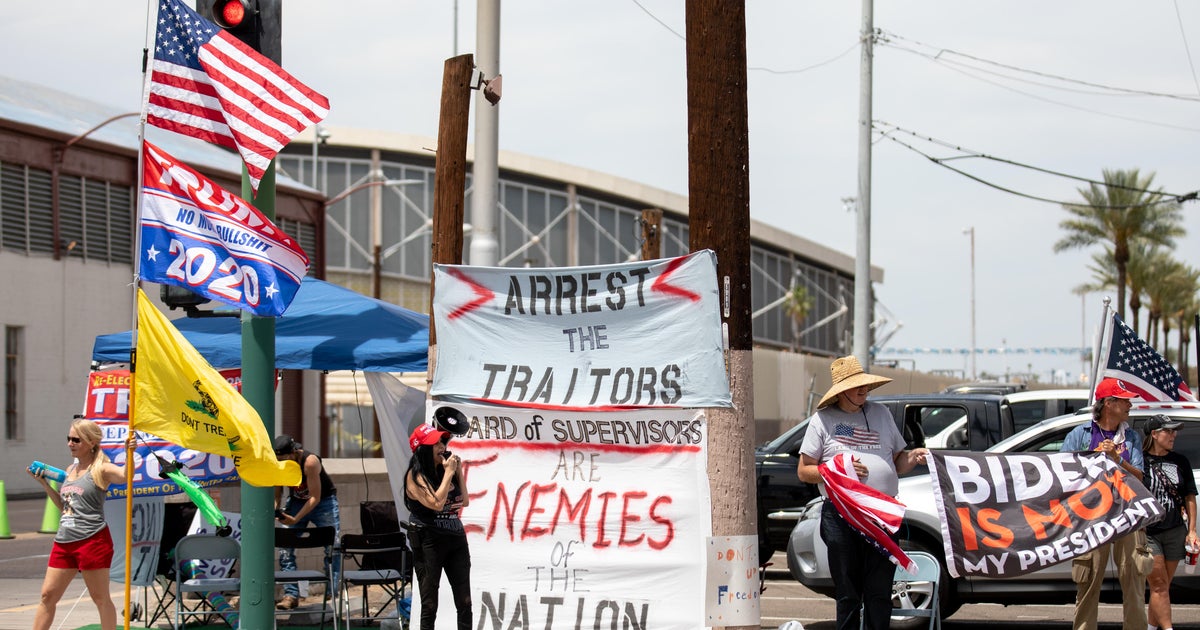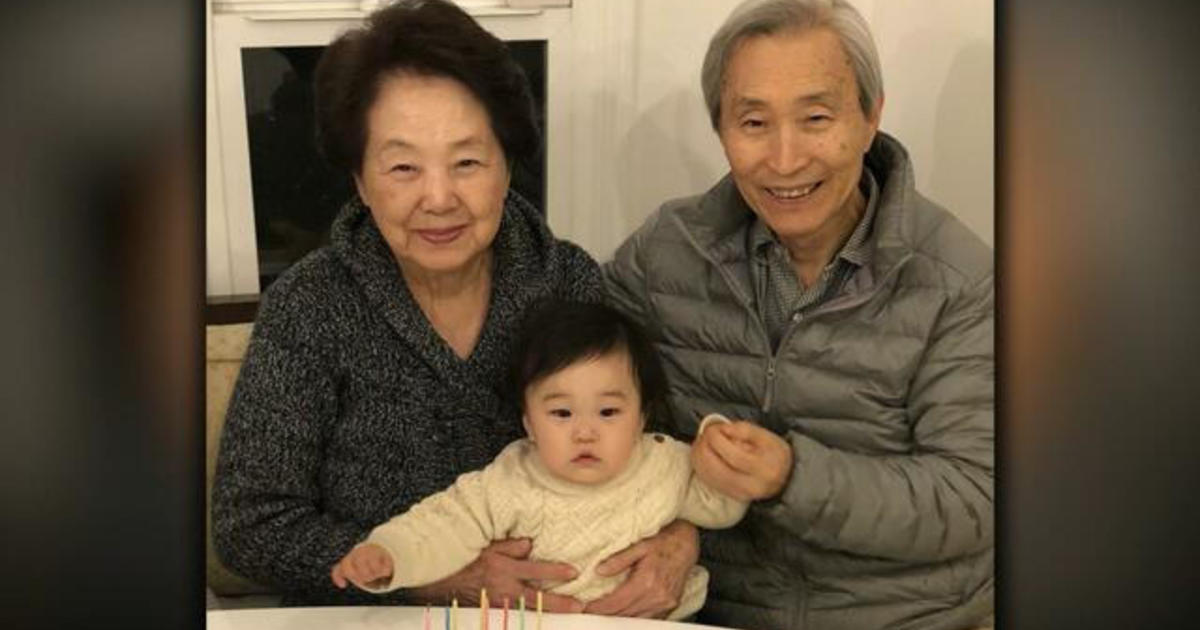Election Day dictionary: All the terms you need to know before you vote in 2020
The coronavirus pandemic has ensured that Election Day 2020 will be like none before. Keeping up with so many new changes can be difficult, so CBS News has compiled a dictionary of some of the new terms you'll be hearing this election season.
To help clarify voting in 2020, CBS News spoke to New Mexico's Secretary of State Maggie Toulouse Oliver about need-to-know Election Day jargon. Toulouse Oliver is the president of the National Association of Secretaries of State (NASS), the nation's oldest, nonpartisan professional organization for public officials that is largely focused on election and voting issues.
No matter what part of the voting process you have a question about, Toulouse Oliver stressed two things: Every state operates differently and rules are changing, so it's vital to check with your state to stay informed on election matters and to vote as early as you can to ensure your ballot is counted.
ABSENTEE (aka VOTE BY MAIL): Prior to COVID-19, an absentee ballot was most often used by voters who could not physically vote in-person on Election Day. To keep individuals safe, many states have expanded absentee parameters, therefore making the process of voting absentee much more prevalent in 2020. Do not be confused, Toulouse Oliver assures, "there is no difference" between voting absentee and voting by mail.
Toulouse Oliver also points out that while some states require no excuse to qualify for absentee status, others are more strict. In some states, your excuse needs to be cosigned by a doctor, or applications need to be notarized.
When you receive your mailed ballot, thoroughly read through the instructions. In some states you need a witness signature for your vote to be counted.
Toulouse Oliver stressed double checking with your state's requirements to know what you need to do in order to properly vote by mail/absentee.
APPLICATION: Unless you live in Washington DC or one of the nine states where registered voters are automatically mailed ballots, you need to fill out an application to vote by mail (VBM). Because of the threat of COVID-19, most states in 2020 allow voters to utilize VBM. Some states are sending applications to all who are registered, other states require you to solicit an application. Check your state's Secretary of State website to find out more.
(see "VOTE BY MAIL")
BALLOT COUNTING: Also known as ballot tabulating or tallying. This is the process of, by machine or hand, tallying votes.
BALLOT HARVESTING: A term used to describe the act of a third-party collecting and submitting ballots from voters. Though allowed in every state, some groups will go to locations like churches or retirement facilities to provide a convenient way for voters to turn in their ballots.
Toulouse Oliver says that she doesn't prefer to use the term because it has "a negative connotation […] even though it doesn't have to necessarily be an nefarious process." Many on the left claim conservatives use "harvesting" as a pejorative to warn voters of outside groups trying to influence or tamper with one's ballot.
Not to be confused with "COLLECTION BOXES".
BALLOT PROCESSING: This is an umbrella term used to describe the handling process of a mail-in ballot. When a sealed ballot is received by your election office, it must be verified before it is counted (see "BALLOT VERIFICATION"). Every state has a different verification process using voter data such as Social Security numbers, signature matching, and notary approval. If a ballot is not verified during processing it will be rejected (see "REJECTION"). Successfully verified ballots are sorted and queued-up for the counting process.
A mail-in ballot is returned within a postage envelope and a privacy sleeve. During processing, ballots are taken out of their envelopes to prep them for counting. Throughout processing, the content of one's ballot is kept private.
Each state has different start times for absentee ballot processing ranging from date of receipt to Election Day. Toulouse Oliver says each jurisdiction has a different way of processing; some via machine, some by hand and some a combination of the two.
Ballot processing is not the same as a ballot being counted/tallied/tabulated (see "BALLOT COUNTING").
BALLOT REJECTION: A rejected ballot cannot be counted. According to Toulouse Oliver, this occurs almost exclusively in vote by mail situations. During ballot processing, ballots are verified according to state law (see "BALLOT VERIFICATION") .
If your mail-in ballot does get rejected, that does not mean you cannot vote. Some states have ballot tracking services which allow you to see if your ballot was received and processed by election officials. Some states will even notify you if your ballot is rejected. However, many states do not offer any kind of ballot tracking.
Voting in-person via machine should not result in a rejected ballot. Voting in-person via a paper ballot can result in rejection, usually when a machine counting the ballot detects an error, such as a stray mark or an improperly filled out ballot. However, Toulouse Oliver says that in many cases, a paper ballot rejected by machine will then be hand counted.
BALLOT VERIFICATION: The vital step in ballot processing where a ballot is either accepted and readied for tabulation or rejected. Voter data is cross referenced with data on file that needs to match the information you submitted when you registered to vote. Different jurisdictions use various tools to verify ballots. Most states use signature matching (see "SIGNATURE CURING"), others require a notary stamp and/or a copy of photo ID.
During the verification process the content of a ballot is kept private.
COLLECTION BOXES: Different states have different rules for who is allowed to handle mailed ballots on behalf of voters. Letter carriers are one of the most common groups entrusted to do so as they collect door-to-door or from USPS blue boxes. Secured collection boxes are slightly different from blue boxes. They are placed in official locations to act as an extension of your election official's office. In many states you can drop your mailed ballot off at your election office, so collection boxes act as satellites to that main hub.
Toulouse Oliver stressed that official collection boxes are clearly marked, locked, and often physically manned or under video surveillance. They are also constructed to be tamper-proof.
EARLY VOTING: Typically used to reference in-person voting that occurs anytime before Election Day. All but nine states offer some kind of in-person early voting.
ELECTION CHALLENGER: Election challengers are similar to poll watchers but have more privileges. They're often appointed by the same groups and watch over polling places for fraud. In some states, challengers can intervene with a voter if they think someone is falsely presenting at a polling place. Meaning, they can step-in and accuse someone of not being whom they claim to be and potential stop someone from voting. They can also challenge poll workers if they believe rules are not being properly followed/administered. Challengers are supposed to operate in good-faith, and carry identification verifying for whom they work. Election challengers are not present at every polling place.
POLLING LOCATION (aka POLLING PLACE): If you submit your vote in-person, you will do so at a polling location.
Find your polling place here.
POLL OFFICIAL: The individuals working at polling places who are hired and trained on behalf of local election officials. Toulouse Oliver prefers to call them "poll officials" rather than "poll workers" because, she said, these individuals take an oath of office to administer elections and in turn are given unique abilities. They're responsible for receiving voters, making sure they're in the right place, are eligible to vote and do so properly. In some states they are also known as "election inspectors."
POLL WATCHER: Poll watchers are observers who are typically paid workers of a government organization -- such as state parties, the Republican National Committee, the Democratic National Committee -- that observe polling places for potential issues. Every state has different parameters, but watchers usually need to be registered to vote in whatever state they're operating. A poll watcher could potentially flag the forming of long lines or that there are not enough poll officials on site. Said watcher can notify election officials of a problem which would then hopefully be solved. Watchers are not official election personnel who are in any way part of administering an election.
POSTMARK: The official U.S. Postal Service mark stamped on a ballot noting the date, time, and location of handling. Check your state's Election Day vote by mail deadline — it might be required that your mailed vote be postmarked by a certain day in order to be counted.
PRECINCT: Not to be confused with polling location, a precinct refers to a geographical location encapsulating groups of households and the individuals who live there.
Toulouse Oliver told CBS News that in years past "precinct" was used to refer to a voter's residential area and polling location. Today, that isn't the case. Multiple precincts can be represented in one polling location. And some precincts have multiple in-person polling places.
Precincts are often used as the building blocks of congressional districts.
PROVISIONAL BALLOT: In the rare case that a voter's eligibility is questioned when they're voting in-person, a provisional ballot will be used. Their ballot is cast, but whatever question remains regarding eligibility must first be resolved before the vote is eventually counted.
REGISTRATION: The first step in the voting process. Registration makes you eligible to vote. It establishes who you are and where you live. Registration is how voter rolls are developed. The database is then used by local election officials to disseminate election-related material.
SECRETARY OF STATE: In most states, the chief election official is the Secretary of State. Some states run their elections through a board of elections, which usually consists of a bipartisan group of officials. A few states use a combination of a lead official and a board. This office's website is where you will find the most accurate information on voting.
SIGNATURE CURING: The processing of notifying a voter if and when their ballot is rejected due to signature discrepancies.
The U.S. Election Assistance Commission (EAC) describes it as "sending out a letter and blank affidavit describing the reason the voter's ballot has been rejected and how they can "cure" or remedy the situation. This often requires the voter to mail back the signed affidavit along with a copy of some form of valid identification. Some states use both a letter and an email to ensure the voter knows to take additional steps to ensure his or her ballot is counted."
However, the EAC warns that only 19 states require election officials to notify voters if their ballots have been rejected due to signature mismatch.
>UNIVERSAL VOTE BY MAIL: Nine states and Washington D.C. currently operate under a universal vote by mail system in which every registered voter is automatically sent a ballot; no request is required.
VOTE BY MAIL: Every state allows voters to vote by mail. Some states have more restrictive laws than others. Currently, twenty-four states have "no excuse vote by mail", meaning a voter need only apply to vote absentee and they will be sent a ballot; no excuse is required. There are six states in which fear of COVID is not an acceptable excuse for voting absentee.
(see "ABSENTEE")



